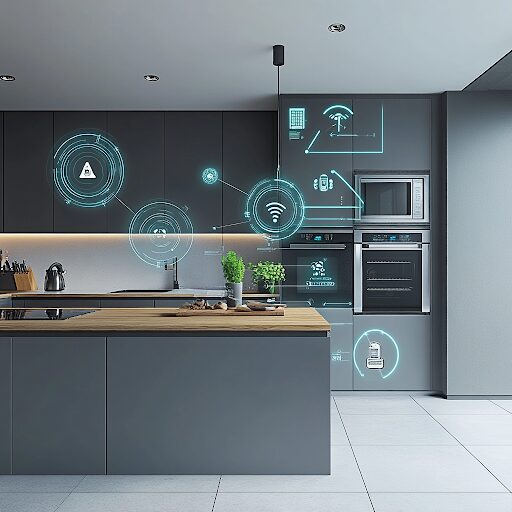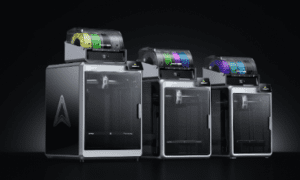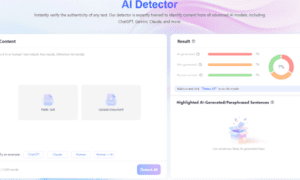The modern home has become a battleground where traditional appliance repair services face off against cutting-edge artificial intelligence systems that can predict failures before they happen. As smart appliance repair technologies evolve, homeowners are witnessing a fundamental shift from reactive maintenance to predictive analytics that can save both time and money. Like having a crystal ball for your kitchen, AI-driven diagnostics are transforming how we think about appliance reliability and household management.
Smart appliances equipped with AI diagnostics represent more than just technological novelty; they’re becoming essential tools for modern households that can’t afford extended downtime. The advancement of AI chips specifically designed for smart home devices signals a major industry shift toward intelligent maintenance systems that learn from usage patterns and environmental conditions. This technological evolution parallels broader trends in fintech and blockchain, where predictive analytics and automated systems are revolutionizing traditional industries by removing human error and improving efficiency.
The Economics of Predictive Intelligence
Think of AI-powered appliance diagnostics as the fintech revolution applied to household management. Just as algorithmic trading systems can predict market movements and execute trades in milliseconds, smart appliances now analyze thousands of data points to forecast potential failures weeks or months in advance. This predictive capability creates substantial economic value for homeowners who can schedule maintenance during convenient times rather than dealing with emergency breakdowns.
The financial implications mirror what we’ve seen in other technology-driven industries. IoT sensors embedded in washing machines, refrigerators, and HVAC systems collect continuous streams of operational data, including temperature fluctuations, vibration patterns, energy consumption metrics, and usage frequency. Machine learning algorithms process this information to identify subtle deviations from normal operating parameters that often precede component failures.
Consider the cost-benefit analysis: emergency appliance repairs typically cost 40% to 60% more than scheduled maintenance, not including the inconvenience factor and potential secondary damage from flooding or electrical issues. AI diagnostics can reduce unplanned appliance downtime by up to 75%, according to industry studies, creating significant value for homeowners while reducing the overall cost of appliance ownership.
Machine Learning Meets Mechanical Engineering
The intersection of artificial intelligence and appliance engineering creates fascinating opportunities for innovation. Modern smart appliances essentially function as distributed computing networks, with each device collecting and analyzing data about its own performance while contributing to larger databases that improve diagnostic accuracy across entire product lines.
Deep learning algorithms excel at pattern recognition, making them particularly effective at identifying the complex combinations of factors that typically precede appliance failures. For instance, a smart dishwasher might detect that water temperature variations combined with specific vibration patterns and increasing cycle times indicate an impending pump failure, triggering maintenance alerts weeks before the component actually fails.
This approach leverages edge computing capabilities, allowing appliances to process diagnostic data locally rather than relying entirely on cloud-based systems. Local processing reduces latency, improves privacy protection, and ensures that diagnostic capabilities remain functional even during network outages. The distributed nature of this system creates resilience that traditional maintenance approaches simply cannot match.
The IoT Infrastructure Revolution
Behind every smart appliance lies a sophisticated Internet of Things infrastructure that would make blockchain developers envious. Sensors throughout these devices collect real-time data on dozens of operational parameters, creating detailed digital twins of physical appliances that exist within manufacturer databases and cloud computing systems.
This infrastructure enables manufacturers to analyze performance data across millions of devices simultaneously, identifying common failure patterns and developing increasingly accurate predictive models. The network effect becomes powerful as more devices connect to these systems, improving diagnostic accuracy for all users through collective machine learning.
Wireless communication protocols enable appliances to share diagnostic information with homeowners through smartphone apps, while also allowing manufacturers to push firmware updates that improve diagnostic capabilities over time. This continuous improvement cycle mirrors the iterative development approaches common in software development and fintech applications.
Real-Time Monitoring and Automated Response
AI-driven diagnostics operate on multiple time scales, from real-time monitoring that can prevent immediate safety hazards to long-term trend analysis that optimizes maintenance scheduling. Smart refrigerators can detect temperature anomalies that might spoil food and automatically adjust cooling systems or alert homeowners to take corrective action.
Similarly, smart HVAC systems monitor air quality, energy efficiency, and component wear patterns to optimize performance while preventing costly breakdowns. These systems can automatically schedule maintenance appointments, order replacement parts, and even guide homeowners through simple troubleshooting procedures using augmented reality interfaces.
The automation extends beyond simple alerts to include predictive parts ordering and maintenance scheduling integration with service provider systems. This level of automation reduces the cognitive load on homeowners while ensuring that appliances receive timely maintenance that extends their operational lifespan.
Integration with Smart Home Ecosystems
Modern AI-powered appliances don’t operate in isolation but integrate with broader smart home ecosystems that include security systems, energy management platforms, and home automation networks. This integration creates opportunities for sophisticated optimization that considers multiple variables simultaneously.
For example, a smart home system might coordinate appliance usage to minimize peak energy consumption while ensuring that diagnostic routines don’t interfere with daily household activities. Machine learning algorithms can identify optimal times for running diagnostic cycles, performing maintenance alerts, and scheduling service appointments based on household routines and preferences.
The ecosystem approach also enables cross-device learning, where patterns identified in one appliance type can inform diagnostic models for other devices. A smart washing machine’s water usage patterns might help optimize dishwasher performance, while HVAC system data could inform refrigerator efficiency algorithms.
Financial Technology Parallels
The evolution of appliance diagnostics closely parallels developments in financial technology, where AI systems process vast amounts of transaction data to identify fraud patterns, optimize trading strategies, and provide personalized financial services. Both domains rely on real-time data processing, predictive analytics, and automated decision-making systems.
Like fintech applications that reduce transaction costs and improve financial access, AI-driven appliance diagnostics democratize access to advanced maintenance capabilities that were previously available only to large commercial operations. Homeowners now have access to the same type of predictive maintenance technologies that major manufacturing facilities have used for decades.
The business model implications also mirror fintech trends, with manufacturers exploring subscription-based maintenance services, usage-based warranties, and performance guarantees that were previously impossible without detailed operational data. These new business models create value for both manufacturers and consumers while improving overall appliance reliability.
Future Implications and Market Evolution
As AI diagnostic capabilities continue advancing, we can expect to see appliance maintenance shift from a reactive service industry to a proactive technology sector. Blockchain technology might eventually enable decentralized maintenance networks where appliances can automatically negotiate service contracts and payment systems without human intervention.
The convergence of AI diagnostics with other emerging technologies creates interesting possibilities for the future of home automation. Computer vision systems could enable appliances to visually inspect their own components for wear, while natural language processing might allow homeowners to describe performance issues in plain English and receive detailed diagnostic information.
Market dynamics suggest that AI-powered diagnostic capabilities will become standard features rather than premium options, driven by competitive pressure and consumer expectations for reliability. This commoditization of advanced diagnostic technology will likely accelerate innovation while reducing costs for consumers.
The technology sector continues demonstrating that artificial intelligence applications can create substantial value by improving operational efficiency and reducing uncertainty. In the context of appliance diagnostics, these improvements translate directly into enhanced quality of life for homeowners who can rely on their household systems to function reliably and efficiently.
As the Internet of Things infrastructure matures and machine learning algorithms become more sophisticated, the boundary between traditional appliances and intelligent systems will continue blurring. The result will be homes that not only respond to occupant needs but actively work to maintain themselves, creating a new paradigm for residential technology that prioritizes reliability, efficiency, and user experience.





























